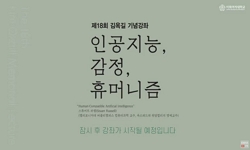As the technology for producing cultural and media content diversifies, the emergence of "virtual humans" is reshaping the conventions and landscapes of cultural industries. Criticizing the limitation of the social discourse and academic discussions s...
http://chineseinput.net/에서 pinyin(병음)방식으로 중국어를 변환할 수 있습니다.
변환된 중국어를 복사하여 사용하시면 됩니다.
- 中文 을 입력하시려면 zhongwen을 입력하시고 space를누르시면됩니다.
- 北京 을 입력하시려면 beijing을 입력하시고 space를 누르시면 됩니다.

가상인간을 생산하는 몸, 노동, 미디어 가상인간 ‘로지’ 사례를 중심으로 = Body, Labor, and Media in Producing Virtual Humans A Case Study of the Virtual Human ‘Rozy‘
한글로보기부가정보
다국어 초록 (Multilingual Abstract)
As the technology for producing cultural and media content diversifies, the emergence of "virtual humans" is reshaping the conventions and landscapes of cultural industries. Criticizing the limitation of the social discourse and academic discussions surrounding virtual humans, which have focused primarily on their economic effects and industrial value as media commodities, this study argues for the necessity of research into the "production" and "production system" of virtual humans as a new media cultural phenomenon. When considering the media ecosystem that is being reconfigured around digital computers and artificial intelligence, this study theoretically describes the need to investigate the multi-layered production system, including producers, technology, and production networks, which are complexly involved in "production" within the contemporary media environment. Then, the study summarizes the system producing the virtual human "Rozy" into four contexts: 1) the production network of algorithms, graphics, and digital technologies, 2) repetitive labor in tech-professionals, 3) social media and digital care-giving labor, and 4) the labor of faceless bodies as ghost labor. Through the case of producing the virtual human "Rozy," the study captures a facet of the dynamic changes that the cultural industry is undergoing due to the evolving technologies contributing to production and distribution. Furthermore, it highlights new perspectives and critical viewpoints for media production studies within the changing media ecosystem.
동일학술지(권/호) 다른 논문
-
젠더 갈등으로 대두된 기업 위기와 온라인 커뮤니티의 귀인 양상 Biterm Topic Model을 이용한 댓글 분석을 중심으로
- 한국언론학회
- 양수민
- 2023
- KCI등재
-
인식의 주체로서의 개인 존 스튜어트 밀과 소크라테스 대화법의 만남에서
- 한국언론학회
- 이호규
- 2023
- KCI등재
-
외국인 범죄 보도에 대한 감성분석 과잉재현, 추세 분석, 매체별 양상을 중심으로
- 한국언론학회
- 최창식
- 2023
- KCI등재
-
뉴스 댓글은 왜 여론의 지표로 여겨지는가? 여론 추정 단서로서 댓글의 기능과 영향에 관한 고찰
- 한국언론학회
- 장윤재
- 2023
- KCI등재





 KCI
KCI DBpia
DBpia






